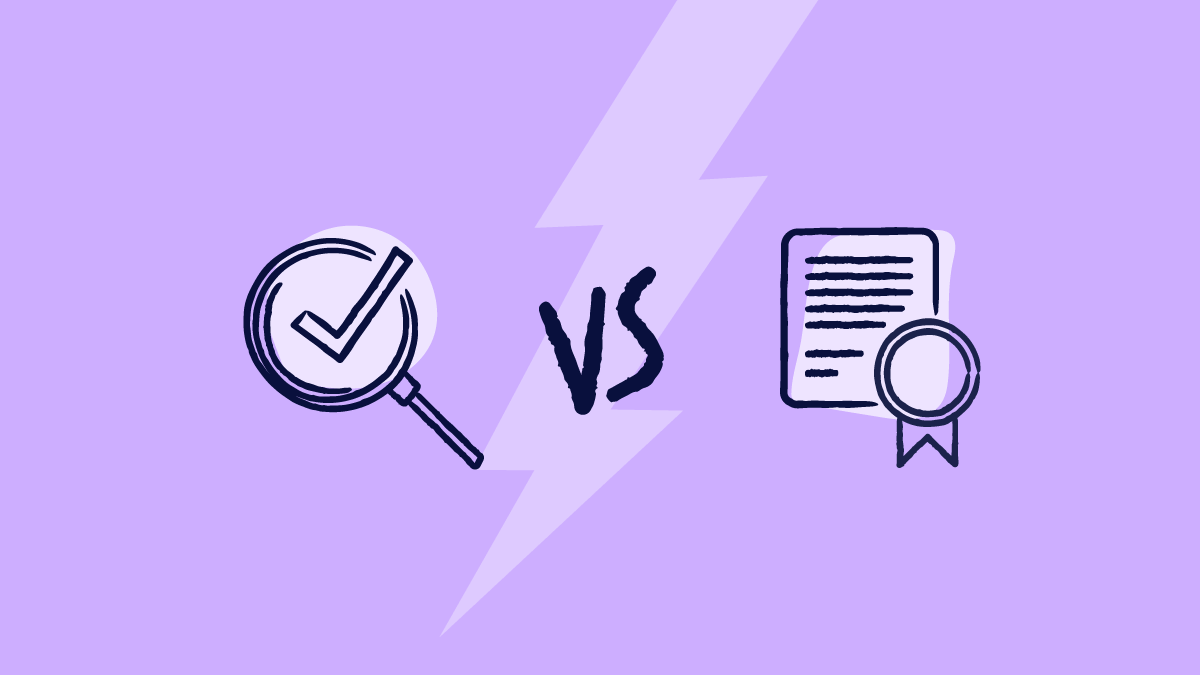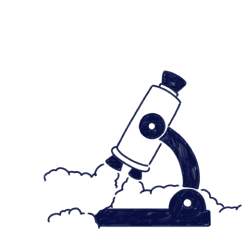
There’s no easier way to illustrate compliance vs quality than through a real-life example…
A few years ago, I was sitting with a QA manager at a mid-sized pharma company, one week before an FDA inspection. She hadn’t taken a proper lunch break in days.
Her team was scrambling to update SOPs, close investigations, and backdate training records. I asked her what was keeping her up at night.
She didn’t hesitate:
I’m worried we’ll pass the audit, and still miss something important.
That stuck with me. The real danger isn’t non-compliance. It’s false confidence.
In life sciences, you can build systems that pass inspections, but don’t always prevent problems. And that’s the risk of treating compliance as the ultimate goal instead of the starting point.
In this article, let’s unpack the real difference between quality assurance and compliance, and why shifting your mindset can unlock better outcomes, not just safer checklists.
What is compliance?
Compliance is the documented adherence to applicable standards and regulatory requirements, such as GMP, ISO standards, and regulations that govern the development, manufacturing, testing, and distribution of life science products.
It ensures that products are consistently safe, effective, and fit for purpose, and that this adherence can be demonstrated during audits or inspections.
In simple terms, compliance is following the rules of laws, procedures, and documentation. It is what allows regulators to verify that the processes are followed.
Compliance is non-negotiable, of course. But compliance alone is like checking if the fire alarm works while ignoring what caused the smoke in the first place.
I’ve seen teams bury themselves in paperwork before audits: cleaning logs, training records, and change control logs. But the moment the auditor leaves, those efforts vanish.
Procedures stay the same, not because they work, but because they “passed last time.”
That’s the compliance trap: doing just enough to stay out of trouble.
Compliance vs quality- quality is what keeps trouble from happening in the first place.
Compliance is a by-product of quality.
What is quality?
Quality, by contrast, is a mindset. It’s about consistency, trust, and improvement.
In technical terms, Quality is the degree to which a product or service consistently meets defined specifications, delivers on safety and efficacy, and satisfies stakeholders, including patients.
It’s about trust from patients, regulators, providers, and your internal teams. It’s about building reliability into every batch, every step, every decision.
It’s not just about following the rules, it’s about doing the right thing even when no one’s watching.
In the ongoing conversation around compliance vs quality, where compliance says, “Did we follow the SOP?”
Quality asks: “Is the SOP helping us do this better?”
Scilife Tip:
Quality is about doing the right thing even when no one’s watching.
Where compliance reacts, quality prevents. Quality is proactive, flexible, and focused on long-term success.
Quality Compliance vs Quality Assurance: The essentials at a glance
Let’s be clear, Quality Compliance and Quality Assurance are not the same.
Here’s how I usually explain compliance vs quality to new QA hires:
Quality Compliance is the corporate license to operate quality in regulated markets, especially under GxP, and ISO standards. It demonstrates, through evidence, that your organisation meets every legal and regulatory requirement and can prove it the moment an inspector walks in.
Internally, Quality Compliance is the framework of policies, procedures and standards that ensures that every batch, unit and record conforms to those external quality requirements.
When done well, Quality Compliance becomes an embedded discipline that drives operational excellence, continuous improvement and smart risk management.
It is your public promise, and daily habit, to deliver reliable, high-grade products rather than the bare minimum.
 On the other hand, Quality Assurance (QA) is about building quality into your processes from the start. It’s proactive, process-focused, and designed to prevent problems before they happen.
On the other hand, Quality Assurance (QA) is about building quality into your processes from the start. It’s proactive, process-focused, and designed to prevent problems before they happen.
QA involves planning, documenting, and implementing standardized methods that prevent defects and build quality into each step of the lifecycle, by design, not by inspection.
In the end, compliance vs quality isn’t a competition; it’s a continuum.
Compliance sets the baseline. Quality drives excellence.
Download our free checklist below to spot where your organisation is merely compliant, where it’s truly quality-focused, and where it needs to shift gears.
Why a culture of quality beats a culture of compliance?
A culture of compliance is about following the rules and avoiding penalties. That’s important, and we've seen that. However, when that’s all you focus on, quality becomes a checkbox exercise.
You do the minimum, and miss the bigger picture. Regulators might see your signatures, but they’re increasingly looking for real maturity: prevention, data, and ownership.
When you lead with compliance, teams get stuck in fear mode. They focus on not getting things wrong instead of figuring out how to get things right.
In contrast, a culture of quality encourages quality ownership. This is the heart of the compliance vs quality conversation. It’s about making quality part of how everyone works, from product design to daily operations. People care not just because they’re required to, and they’re paid for, but because they care.
Scilife Tip:
A culture of quality changes quality from a cost centre to a value lever and competitive advantage.
Here’s a fact:
A Harvard Business Review study found that organizations with a highly developed culture of quality spend, on average, $350 million less annually fixing mistakes than those with a poorly developed one.
That’s not just better quality. That’s better business. This is where compliance vs quality contrast really matters.
In addition, a culture of quality builds trust with regulators, healthcare providers, and patients because you’re consistently delivering high-quality products.
So, while compliance keeps you out of trouble, a culture of quality helps you truly excel and make a real difference in people’s lives.
The difference between quality assurance and compliance ultimately is: the difference between doing things right and doing the right things.
Quality and compliance examples
Let me give you two quality and compliance examples I’ve seen up close.
Company A: Compliance-driven
Team A prepared for audits with a flurry of rehearsals, emergency updates, and last-minute cleanups. SOPs were followed on paper. Deviations were closed quickly, but not always thoroughly. When asked why a CAPA was delayed, someone said: We just need it off the list before the audit.
That company passed this year’s inspections. But they had five product complaints in the next year and a recall the following year.
Company B: Quality-driven
Team B was a different story. They invested in an eQMS. Every deviation was logged, linked to a CAPA, and assigned in real time. CAPAs were tracked for effectiveness, not just closure. In audits, inspectors often commented on how confident operators were in explaining their processes.
They released batches 25% faster than before, and hadn’t had a single recall in three years.
Quality became the enabler, not the bottleneck. These quality and compliance examples prove that organizations that take quality seriously reap countless long-term benefits.
Why you need quality and compliance management software
We’ve discussed the difference between quality assurance and compliance.
We’ve seen quality and compliance examples in practice. Now, let’s discuss tools.
If you’re using spreadsheets and email to manage deviations, you’re not managing quality; you’re managing chaos.
Paper systems, shared folders, and spreadsheets can’t keep up. They don’t scale. They don’t integrate. And they definitely won’t protect you when the auditor starts asking questions.
That’s why a proper electronic Quality Management System is essential. It brings all your core QA processes—deviations, CAPAs, change control, training records, audit findings—into one controlled system.
No more chaos. No more missed follow-ups. Just complete visibility, traceability, and control across the board.
Investing in quality and compliance management software means fewer surprises, smoother audits, faster decisions, and more time spent on preventive quality, not paperwork.
An eQMS doesn’t just help you pass audits. It helps you improve every day, not just once a year.
If you want to stop reacting and start improving, you need more than patchwork tools. You need quality and compliance management software, i.e, a system that’s built for how quality actually works.

Conclusion
The next time someone says: We’re compliant, ask this: Are we also improving?
Because when it comes to the compliance vs quality debate, the key thing to remember is that compliance will keep you in the game, but quality will help you win it. Quality is what keeps patients safe, your brand trusted, and your operations scalable.
In life sciences, where lives - not just profits- are on the line, we don’t have the luxury of settling for checklists. We need systems that deliver consistency, a culture that enables trust, and technology like quality and compliance management software that makes it all sustainable.
So let’s stop treating compliance like a burden. Let’s treat it like the foundation it is, and build something better on top: build quality.
At Scilife, we’re experts at building quality cultures with innovative tools, and we help your entire organization get on board with quality.
Because quality is an investment, not an expense.












